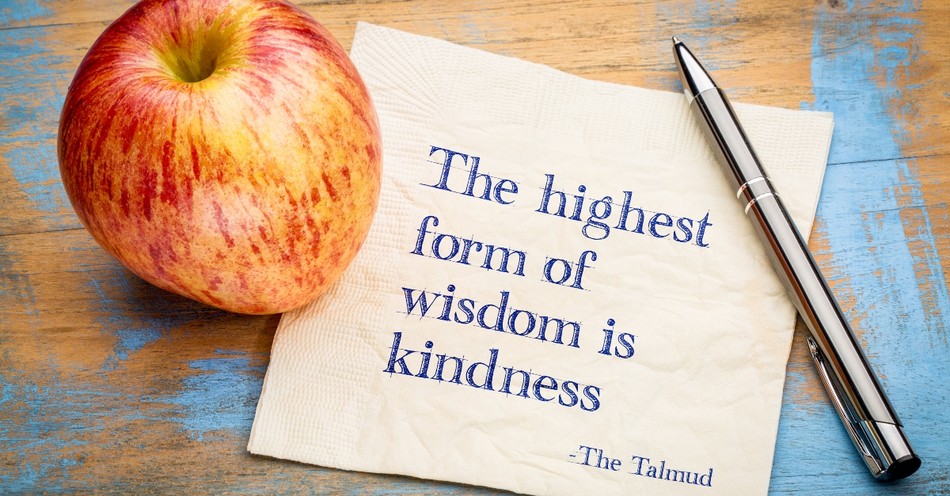Jesus condemned the rabbinical religionists of his day for adding to the Word of God, for heaping rules and regulations upon the people that the rabbis and priests could not keep:
And He said, “Woe to you also, lawyers! For you load men with burdens hard to bear, and you yourselves do not touch the burdens with one of your fingers” (Luke 11:46 NKJV).
Most Christians are familiar with the Jewish religion of the Old Testament. In fact, Christians believe that the Old Testament teaches the same truths of the New Testament. There is continuity and discontinuity, as Jesus came to fulfill the Law, but the Old Testament is not a different religion from the New Testament. However, oral traditions, commentaries, and sayings were added to the Word of God so that by the time of Jesus, one could hardly keep up with the extraordinary rabbinical additions to the Scriptures.
The Talmud vs The Torah
Few of us are acquainted with the Rabbinic Judaism that began about the time of Jesus. And yet, it is Rabbinic Judaism that is most often practiced today. In this sense, Christianity is older than Rabbinic Judaism if one considers that modern Judaism is built upon commentaries, oral tradition, and directions for living, as much as the Old Testament. Following the siege of Jerusalem in AD 70 and the resulting diaspora of the Hebrew people, the rabbinical leadership sought to provide a sort of compendium of the Jewish faith.
The purpose of this extrabiblical literature was to carry on the traditions and to provide commentary on the Tanakh (an acronym using the first letters of the three main divisions of the Masoretic text of the Old Testament: the Torah, the five Books of Moses; the Nevi’m, the Prophets; and the Ketuvim, the Writings) based upon the parts of the Scripture: the law, the prophets, and the writings. The oral traditions, called the Mishna, were assembled and recorded around AD 200.
The Jerusalem Talmud
The written form became the Talmud. More properly, this first recording of oral tradition was known as the Jerusalem Talmud. As the Jewish people began to live in diaspora, some rabbis wanted to return to the old land. Those who gathered in Roman Palestine and the Middle East further recorded oral tradition commentary on the Old Testament, on how to live the Jewish life (Mishna) in diaspora. This is the second part of the Talmud: the Gemara. So, the Talmud, a document of 2,711 pages in its original form, is comprised of Mishna (oral tradition written down), and Gemara (commentary on the Mishna). A second significant event happened that further shaped the Talmud that we have today.
The Babylonian Talmud
The Jerusalem Talmud first appeared after the destruction of Jerusalem in AD 70. However, around AD 200, persecution led to a second major diaspora, this time to Babylon. While there, the Talmud assumed its most important and final edit. Rabbis Abaye and Rav, and Rav’s 10 sons, used dialectical thought (a method of finding truth through affirmation and denial, yes and no, and arguments intended to lead to truth) to establish the final commentaries on the Mishna. Thus, the Babylonian Talmud was established by the fifth century and granted halachic — Jewish “canon law,” or legal status — by the people. The Babylonian Talmud remains the authoritative expression of Rabbinic Judaism today.
The Talmud and Christianity
The question, then, is can the Talmud be used to bring others to Christ? Is it an ally in the desire to see unbelievers from Jewish backgrounds come to Jesus as Lord and Savior? The answer may be in Acts 18, the Apostle Paul goes before the philosophers at the Areopagus:
Some of the Epicurean and Stoic philosophers also conversed with him. And some said, “What does this babbler wish to say?” Others said, “He seems to be a preacher of foreign divinities” — because he was preaching Jesus and the resurrection. And they took him and brought him to the Areopagus, saying, “May we know what this new teaching is that you are presenting? For you bring some strange things to our ears. We wish to know therefore what these things mean.” Now all the Athenians and the foreigners who lived there would spend their time in nothing except telling or hearing something new.
So Paul, standing in the midst of the Areopagus, said: “Men of Athens, I perceive that in every way you are very religious. For as I passed along and observed the objects of your worship, I found also an altar with this inscription: ‘To the unknown god.’ What therefore you worship as unknown, this I proclaim to you. The God who made the world and everything in it, being Lord of heaven and earth, does not live in temples made by man, nor is he served by human hands, as though he needed anything, since he himself gives to all mankind life and breath and everything. And he made from one man every nation of mankind to live on all the face of the earth, having determined allotted periods and the boundaries of their dwelling place, that they should seek God, and perhaps feel their way toward him and find him. Yet he is actually not far from each one of us, for ‘In him we live and move and have our being’; as even some of your own poets have said, ‘For we are indeed his offspring’” (Acts 17:18-28 ESV).
The lessons from Paul, a rabbi of great training in debate, are many. Consider these:
- To learn about another person’s beliefs, literature, and customs is an act of human respect.
Paul obviously did not believe in the “unknown god” whose religion was inscribed on the city welcome sign. However, Paul used that seminal understanding to establish a common bridge where both sides could meet. The Talmud is the authoritative document in Jewish religion (from Reformed, that is, more liberal Judaism that has conformed to modern Western ideas, to Conservative Judaism). We should learn all we can about it. It is an act of respect that builds bridges, avenues over which the Gospel may travel from person to person. - To learn about another religion’s documents is to discover “the sense of the divine” (sensus divinitatus, John Calvin) that is in all human beings.
Calvin taught that since we are all God’s children, made in His image, we have, within us, what the Preacher in Ecclesiastes called, “eternity in their hearts” (Ecclesiastes 3:11 NKJV). There is likely a remnant of truth that can be used to connect to the Person who is the Way, the Truth, and the Life, our Lord Jesus Christ. - While the Talmud denounces Jesus as a “sorcerer” (e.g., Sanhedrin 43a), Jesus is, nevertheless, acknowledged as an important prophetic figure during the early first century AD. The Talmud identifying Jesus, though wrongly, nevertheless offers an opportunity for conversation.
The Talmud and Jesus
The Talmud is the collection of oral traditions (Mishna) with commentary (Gamera). The Babylonian Talmud is the authoritative version that continues to guide and inform Jewish religious life today. While Christians do not recognize the Talmud as part of God’s inerrant and infallible Word, we should recognize that the Talmud is important to the Jewish people and religion. Thus, as we are called to testify the Lord Jesus Christ to all human beings, and in doing so, follow the Apostle Paul, who sought to both understand and respect the literature and religious inquiry of others. So, we respect the place of the Talmud in Jewish life. While we reject the characterization of our Lord as a “sorcerer,” we are thankful that we have His name in Jewish primary religious documents. We pray that as the Lord gives us opportunity, we, too, might present the Person of our Lord and Savior Jesus to everyone. For so we recall the passionate prayer of Paul:
Brethren, my heart’s desire and prayer to God for Israel is that they may be saved (Romans 10:1 NKJV).
Sources
Gustaf Dalman, Jesus Christ in the Talmud, Midrash, Zohar, and the Liturgy of the Synagogue (Рипол Классик, 1973).
Jacob Neusner, The Idea of History in Rabbinic Judaism, vol. 12 (Brill, 2004).
Jacob Weingreen, From Bible to Mishna: The Continuity of Tradition (Manchester University Press, 1976).
Jeffrey L. Rubenstein, The Culture of the Babylonian Talmud (JHU Press, 2005).
Robert Travers Herford, Christianity in Talmud and Midrash (KTAV Publishing House, Inc., 2006).
©iStock/Getty Images Plus/marekuliasz





.jpg)